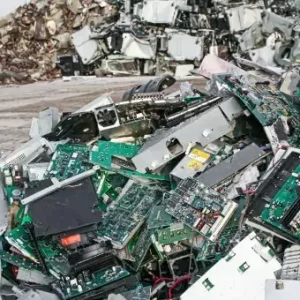
St. Lawrence University Participated in E-Waste Management Awareness Run and Now it has taken responsibility to champion the E-waste Awareness to the rest of the Community in Uganda by explaining what is it.
E-waste management is a critical component of sustainable development and environmental protection. It involves the safe disposal and reuse of electronic products, such as computers, cell phones, TVs, printers, and other digital devices that are no longer in use. Unfortunately, as our reliance on technology continues to grow exponentially with each passing year, so does the amount of e-waste produced globally.
This article will provide an overview of what e-waste is, why it’s essential to manage it effectively, common types of e-waste found today, and the different approaches and challenges associated with managing this growing problem.
What is E-Waste Management?
E-waste management refers to properly disposing and managing electronic waste, including old or discarded electronic gadgets such as phones, computers, and televisions. The process involves the collection, transportation, recycling, refurbishing, and disposal of electronic waste in an environmentally-friendly manner.

The goal of e-waste management is to reduce the negative impact of electronic waste on the environment and human health by minimizing pollution, conserving natural resources and energy, and promoting sustainability. Proper e-waste management also ensures the recovery of valuable materials from electronic waste, such as copper, silver, and gold, to create new products.
Different Types and Examples of E-Waste
E-waste, or electronic waste, refers to electronic products that are no longer wanted or useful and have reached the end of their useful life.
Here are some examples of e-waste:
- Computers and computer peripherals (keyboards, mice, printers)
- TVs and other home electronics (DVD players, stereo systems)
- Mobile devices (smartphones, tablets, laptops)
- Small household appliances (toasters, coffee makers, vacuum cleaners)
- Large home appliances (air conditioners, refrigerators, washing machines, etc.)
- Batteries (including rechargeable batteries)
- Light bulbs (LED, fluorescent, and incandescent)
- Medical equipment (including monitoring devices and diagnostic equipment)
There are different types of e-waste, including:
- IT and telecommunications equipment
- Consumer electronics
- Electrical and electronic tools
- Toys, leisure, and sports equipment
- Medical devices
- Monitoring and control instruments
- Automatic dispensers
- Solar panels




